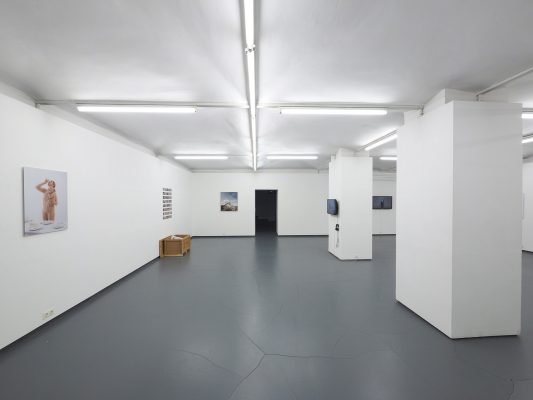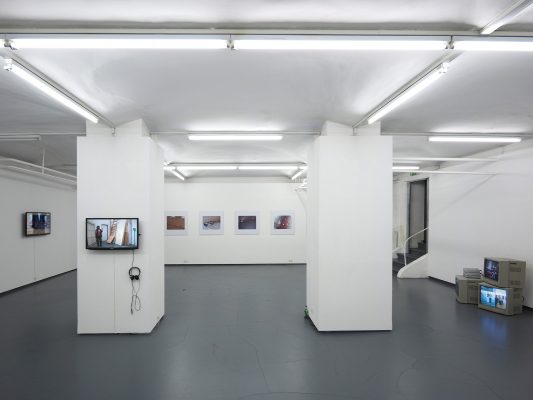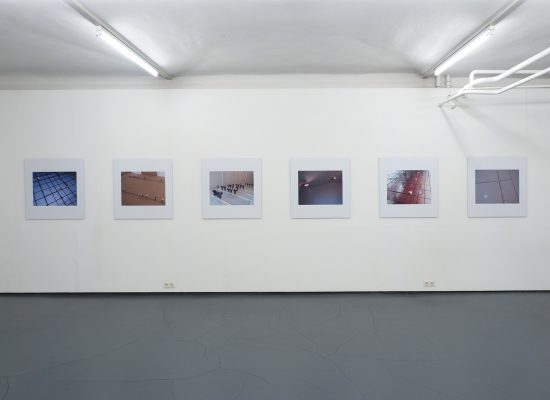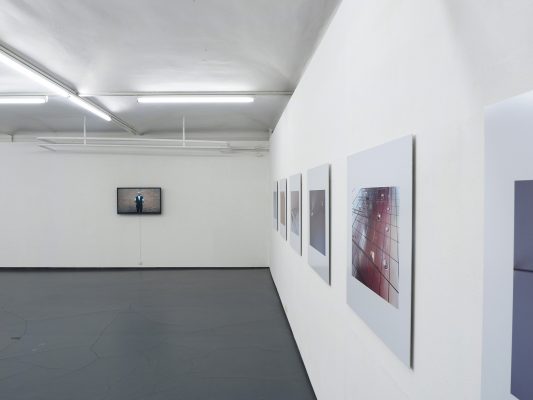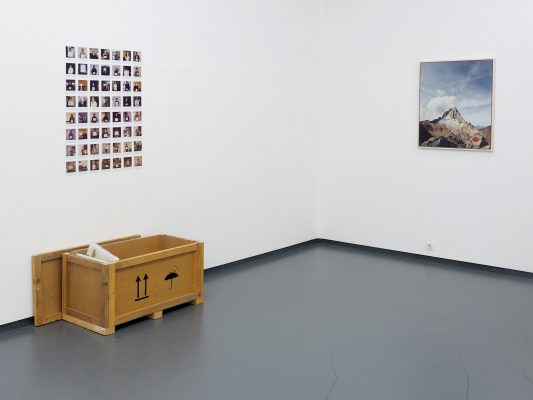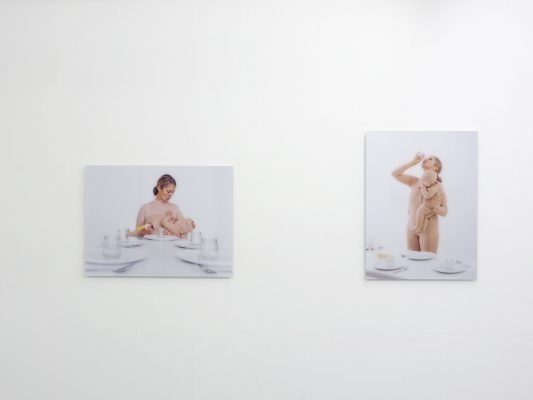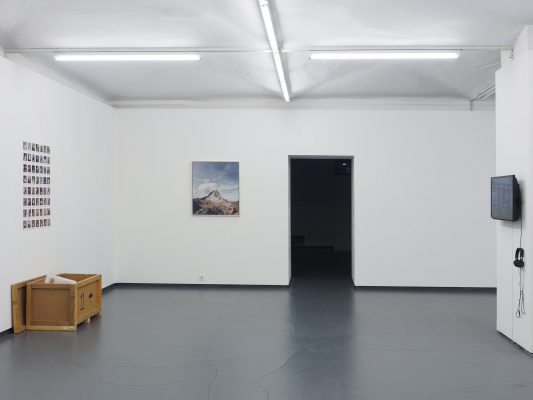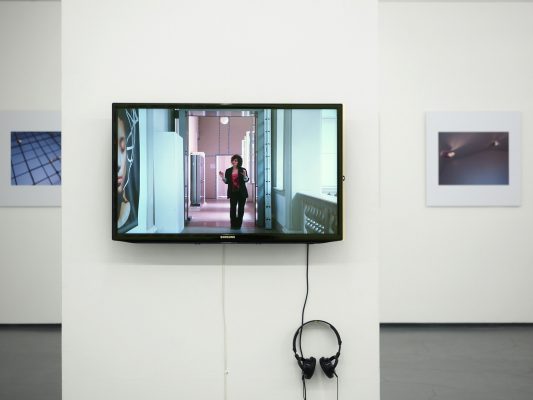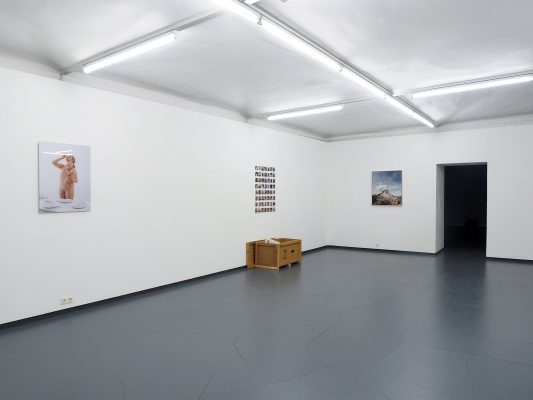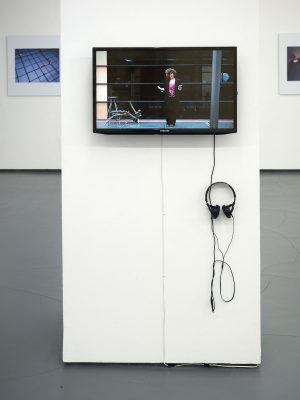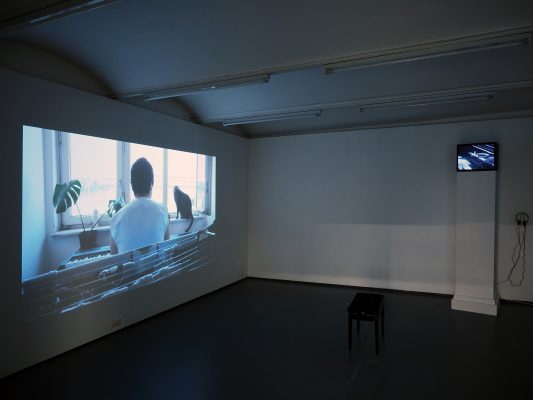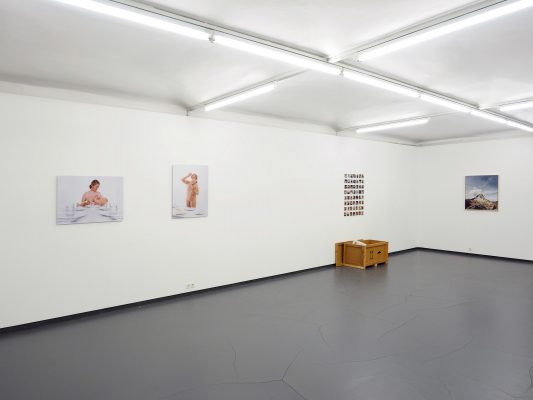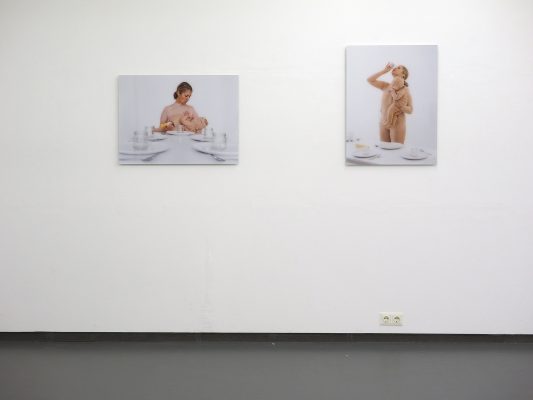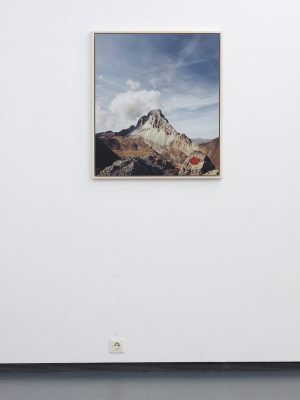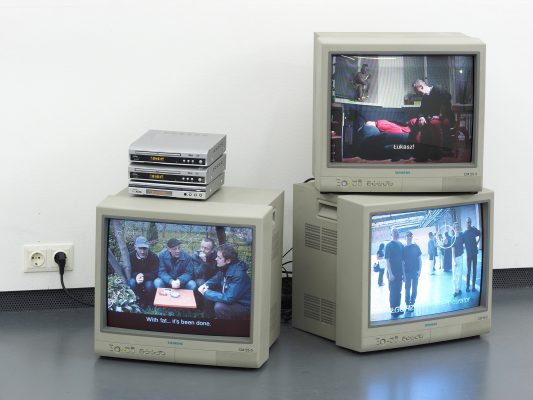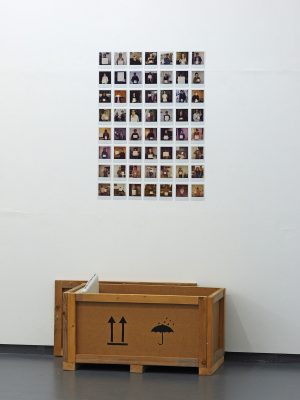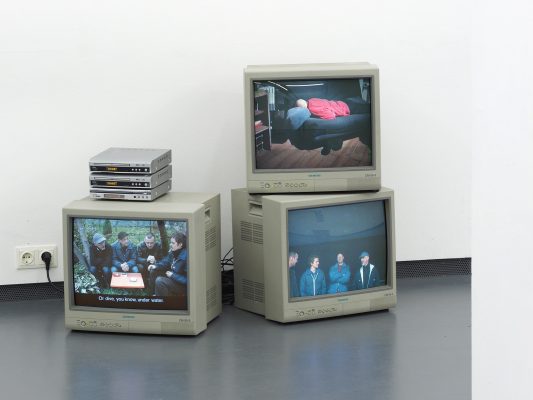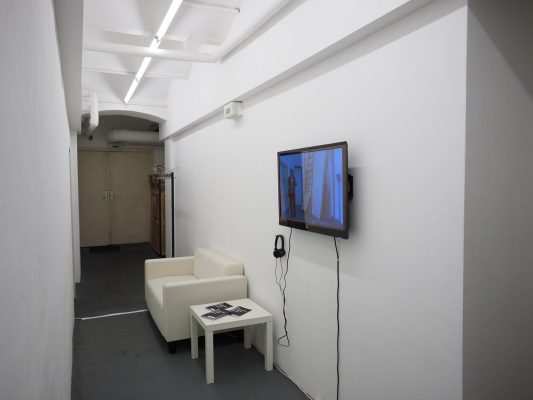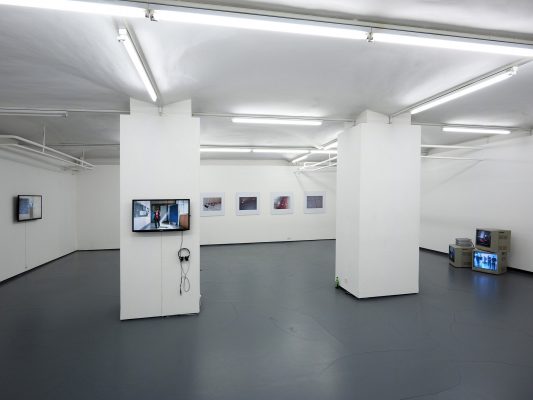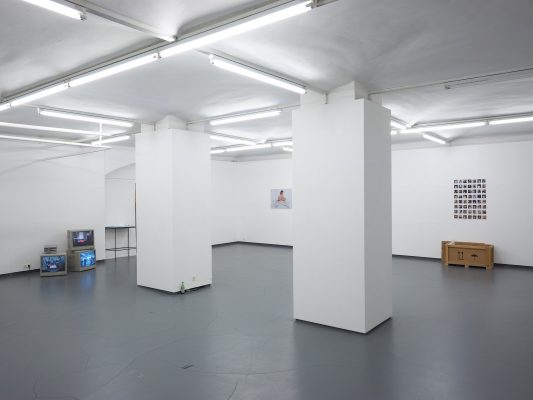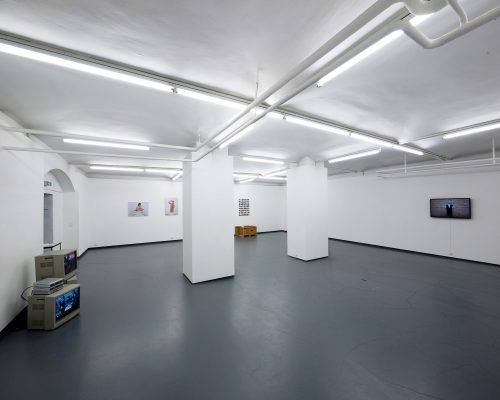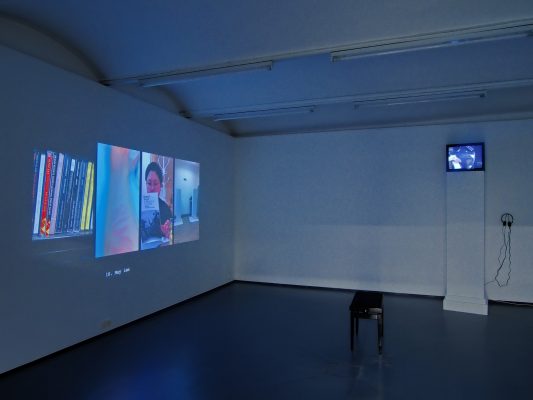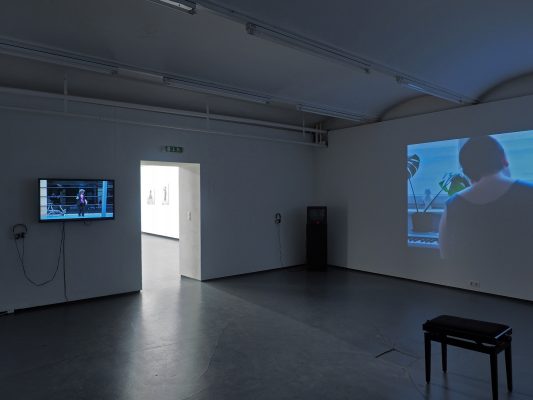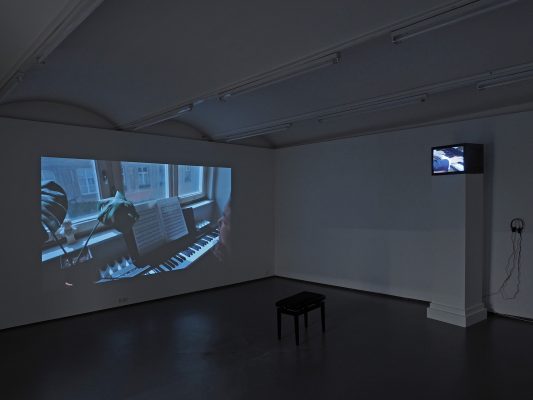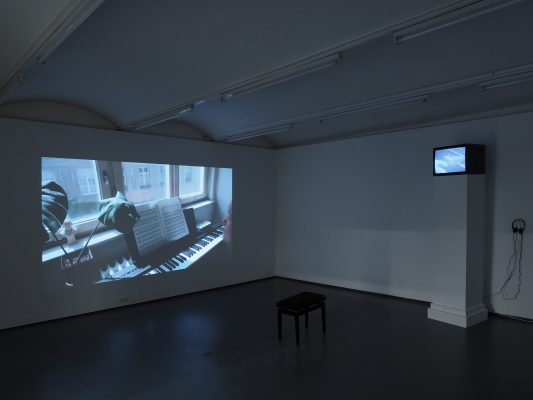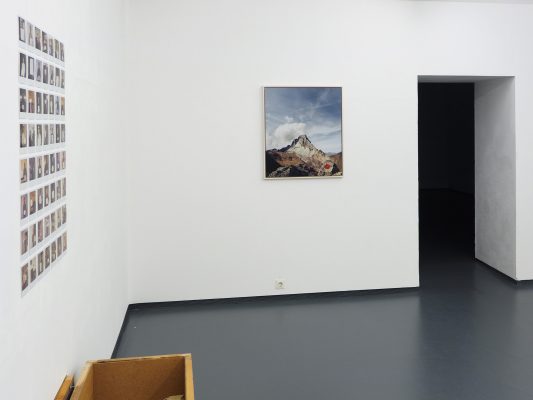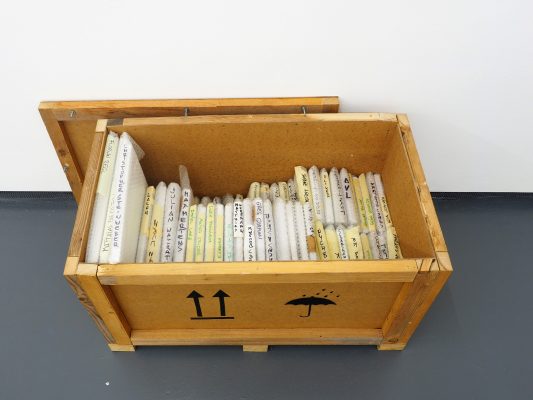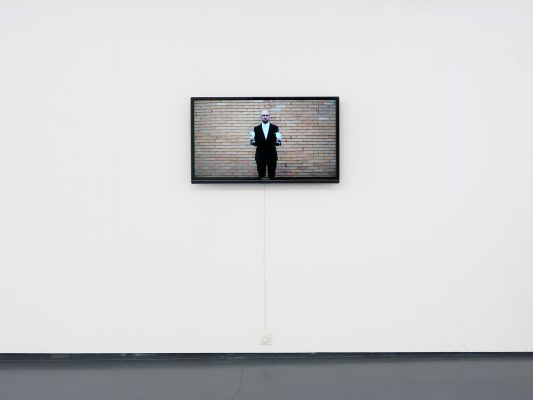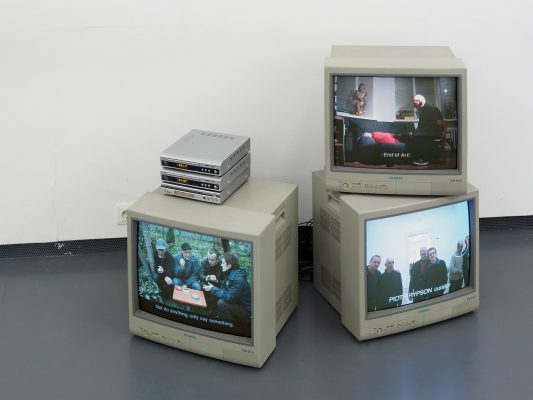Opening: Monday, 6 October at 7 p.m.
Introduction: Andreas Müller
sponsored by: BKA Kunst; MA7-Kultur; Cyberlab, Wiener Linien
As with the production of art itself, the lives of artists are largely determined by economic circumstances. This is not only expressed by the artist´s individual presence in the art market system but also often becomes part of the critical reflection in the works themselves. The show will be presenting the positions of young artists who have only recently graduated but also those of artists who are already an integral part of the system which the exhibition intends to question.
Isabel Czerwenka-Wenkstettens project KÜNSTLERMILCH / ARTIST'S MILK, an excerpt of which will be presented in photographs, shows the artist with her child in an artificial setting which inscribes the work into prevailing sociological conditions: she not only throws light on the delicate relationship between the family and the production of art – and especially the radical break caused by her becoming a mother – but simultaneously renders visible strategies within the closed system of the art business by both drinking expressed breast milk and filling glasses with it.
The Polish art collective, Grupa Azorro, has been concerned with the subject of the art business for some considerable time. In the work, Portrait with a Curator, the group places itself in galleries and other art spaces which, because of their layout, facilitates the filming of a group portrait which includes a completely unaware curator. In this playful way a further discursive meta level of the art business is pointed out – in addition to the formal quality of art production – and manifested in the reality of contemporary understanding of the artistic representation in networks.
Matthias Krinzinger’s work, € 92.000.- (Große Kinigat) connects the inherently subversive interaction generally present in his work with the art market by photographing the red (sold) dot – emblematic of the commercialisation that takes place in the art market – that he attached to Große Kinigat mountain in Eastern Tyrol. The sale of the mountain staged in the picture is based on real events: its actual sale. By equating it with the field of art the singular assertion of private ownership is confronted by a public – and thus general – cultural treasure and therefore renegotiated. The work will be supplemented by further installative interventions related to the subject.
The photo series, Experimental Sets, by Sigrid Kurz takes her oeuvre in the area of institutional criticism one step further by making the structures of exhibitions the core of her work instead of the exhibitions themselves. Her focus consists of shots of lighting systems which are to be found in use in exhibition spaces, displays and shows. These are given the limelight by changing their position – the original view of the ceiling is turned into a floor. This turns the spotlights themselves into an exhibition installation and the systemically implicit notions of production and presentation are thus also transformed into subject matter to be examined.
With its self-imposed drill, the video installation, 100 Days of Mad Rush by Hyo Lee, engages with the pressure to perform inherent in the art business. The artist, with no previous knowledge, undertook to learn the piano piece of the same name by Philip Glass in just 100 days and meticulously documented the process in text and images. The video, which at the end shows her playing, is supplemented by original film material of pianists engaged in the never-ending process of fragmentary and collage-like repetitions thus critically drawing our attention to the ‘schooling’ that art imposes until it is a perfectly adapted exercise.
The three channel video installation, The Connection of Three Spaces by Suzie Léger is a translation of her performance with the same title in which the artist appropriates the language of a well-known conceptual artist. By describing a room concept using it, the interchangeable empty phrases she employs are applied an art system which has become so highly self-referential that the process unmasks it.
As is customary in his work, Roman Pfeffer’s video piece, Waiting, makes use of a word game (waiting/waiter) which conflates waiting and serving. He holds two wine glass in his hands which are hit by streams of water. The fact that he is unable to serve them without moving away from the feed flow describes the equation of an overflowing artistic potential that is still insisting on its implementation. Thus reflects in a paradigmatic way the social image of an ‘artist-on-call’ whose wealth of ideals and creativity seems to be solely determined by economic demand.
Angelika Wischermann’s video, Oneironaut, shows the artist engaged in an underwater parcours between balloons. As she wanders from one balloon to another loaded down with weights, drawing air from each in turn so that she can continue to breath underwater, the life threatening setting in which she has voluntarily placed herself can be read as a metaphorical interrogation of the artist’s existence.
F O T O G A L E R I E W I E N
Andreas Müller and Petra Noll, for the collective
